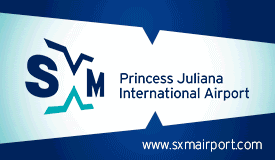~Long-time wish to produce, bottle drinking water now a reality~
 SABA:--- Saba celebrated a remarkable moment on Tuesday, November 2, with the official opening of the Saba Splash water bottling plant. At the new plant, 3-gallon and 5-gallon water bottles will be filled, using a state-of-the-art system that produces healthy, safe, and affordable drinking water, providing a basic need for the Saba people. The water bottling plant was constructed with funding of the Ministry of Infrastructure and Water Management (IenW).
SABA:--- Saba celebrated a remarkable moment on Tuesday, November 2, with the official opening of the Saba Splash water bottling plant. At the new plant, 3-gallon and 5-gallon water bottles will be filled, using a state-of-the-art system that produces healthy, safe, and affordable drinking water, providing a basic need for the Saba people. The water bottling plant was constructed with funding of the Ministry of Infrastructure and Water Management (IenW).
The opening of the Saba Splash bottling plant is a “significant milestone,” said Commissioner of Infrastructure and Water Affairs Bruce Zagers in his speech. “Not only does this bring us one step closer to finalizing the initial scope for improving the water quality and quantity for Saba, but it also creates an opportunity for the Saba Government to provide quality drinking water, which is produced locally, at an affordable price for our people.” At the same time, the plant will contribute to Saba’s ambition to be more self-reliant and sustainable.
At the Saba Splash water bottling plant, 160 5-gallon bottles can be filled per hour, and 180 3-gallon bottles per hour, explained plant manager Oscar van der Kaap. But before the actual bottling takes place in a fully-automated, completely hygienic machine, the drinking water goes through an extensive process to make sure that it is safe, healthy, and tasteful.
The water comes up from the reverse osmosis (RO) water plant in Fort Bay, through the pipeline, and goes into a large cistern. From there, the water comes into the building where it first goes through an eco-friendly active carbon filter, then through RO filters, an ultra-violet (UV) light to kill all possible bacteria. At that stage, magnesium and calcium are added, which are beneficial to people’s health and generally don’t exist in other bottled water brands.
Fully automated
The water then goes through an ozonating machine for disinfection without chlorine before it is stored in a large tank from which a sample is taken and sent to a lab in St. Maarten. Once the lab has given the green light, the water batch goes to the machine where the water is put into the bottles.
Saba Splash is one of the only water bottling plants in the Caribbean that uses an ozonating system and the only one with a fully-automated bottle filling system, explained Van der Kaap.
“The Saba Splash bottling plant has been outfitted with state-of-the-art equipment that cannot be found on our neighboring islands,” said Commissioner Zagers. “We can take pride in knowing that this is our own product made by children of the soil for now and for future generations,” said Van der Kaap in his opening words. Both he and Zagers extensively thanked all persons and stakeholders for “making this dream a reality.”
The Saba Splash Bottling Plant will start with regular sales to the public this month. Through a subsidy granted by the Ministry of IenW, consumers will pay less for their water bottles until July 2022: US $3.50 for a 3-gallon bottle and US $4.50 for a 5-gallon bottle, instead of the regular price of respectively US $6 and US $7.
Vitens Evides International (VEI), a non-profit water consultant from the Netherlands, and its experts were instrumental in the water bottling plant project. VEI became involved in the water project in 2016, and worked in close cooperation with the Ministry of IenW and the Human Environment and Transport Inspectorate (ILT) from the Netherlands.
Good cooperation
“The water bottling plant is the result of good cooperation and teamwork, but also perseverance. Saba Splash will bring you healthy, reliable, and affordable drinking water. But it also suits your ambitions towards self-reliance and increased sustainability,” said Fred Elgers of VEI in his remarks.
“Despite some major hurdles along the way, in particular your recovery from Hurricane Irma and the COVID-19 restrictions, the Public Entity, the contractors, suppliers, Saba Electric Company (SEC), the operational team, and VEI did their utmost to end up where we are today,” added Elgers. Water is a basic need and until now Saba didn’t have its own drinking water supply system. Having a steady drinking water system seems logical to many people in the world, but to accomplish this in Saba was a challenge, he said.
With the financial assistance of the Ministry of IenW, the Public Entity Saba already executed several projects to make drinking water and water, in general, more affordable and accessible. These efforts include the installing of pipelines from the water factory at Fort Bay, through the villages, and the installing of various filling stations in strategic locations, Commissioner Zagers stated in his speech at the opening. The installation of the pipeline and the filling stations has drastically reduced the price of transporting water. Also, multiple cisterns were constructed throughout the island which has resulted in a large increase in the water storage capacity.
Example of progress
The bottling plant is one of the last elements of what has been one of the most successful projects since Saba became a Dutch public entity. Commissioner Zagers referred to the water project as “a real example of progress.” He said that projects like these not only created employment opportunities but also adequately addressed the water shortage problems that Saba has experienced during severe droughts.
“It has significantly improved the availability of good quality, and good tasting, drinking water. Lastly, and more importantly, we have made water, which is a basic necessity, available and more affordable for our people. With this project we already highlight as a success story, where trust, creativity, and flexibility, has resulted in the delivery of a product and service that is positively impacting Saba and our people,” Zagers said.
The water bottling plant was opened in the presence of members of the Saba Island Council, representatives of the Ministry of IenW, the Ministry of Home Affairs and Kingdom Relations (BZK), and invited guests.










